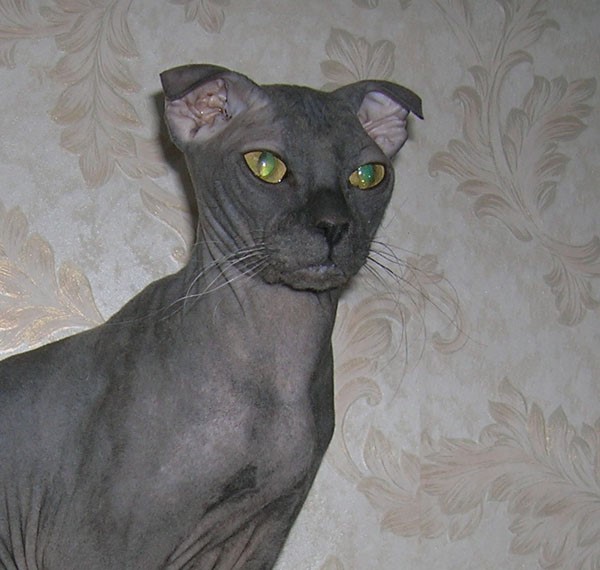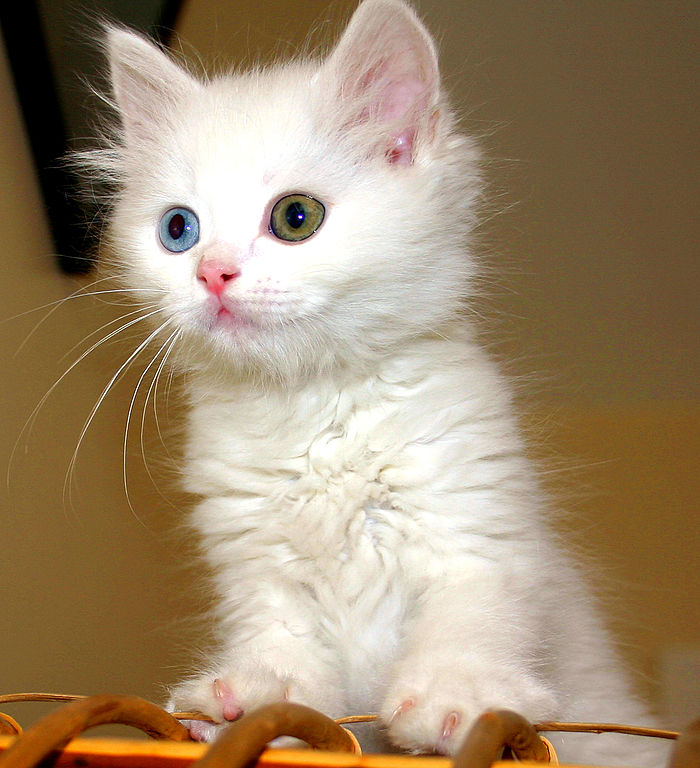
Here you can study for the exam. Look up keywords and learn definitions about all kind of subjects.
More subjects
The Turkish Angora (Turkish: Ankara kedisi, 'Ankara cat') is a breed of domestic cat. Turkish Angoras are one of the ancient, natural breeds of cat, having originated in central Anatolia (modern-day Turkey, Ankara region). The breed has been documented as early as the 17th century. Outside of the United States, the breed is usually referred to as simply the Angora or Ankara cat. Like all domestic cats, Turkish Angoras descended from the African wildcat (Felis lybica). Their ancestors were among the cats that were first domesticated in the Fertile Crescent. (Source: Wikipedia.org, CC BY-SA)
The Turkish Van (pronounced Von) is a naturally occurring breed of domestic cat that originated in the Lake Van area of modern-day Turkey, part of Armenian Highlands. The Van is classified as a semi-long hair, but it has two lengths of hair, determined by season. In the winter, the hair is thick and long. In the summer, the hair sheds to leave a short light coat. Both coat lengths are typified as being as soft as cashmere, down to the root. There is no evident undercoat on the Van, only one coat. The breed is rare, and is distinguished by the Van pattern (named after the breed), where the color is restricted to the head and the tail, and the rest of the cat is white; this is due to the expression of the piebald white spotting gene, a type of partial leucism.: 148 A Turkish Van may have blue or amber eyes, or be odd-eyed (having one eye of each colour). The breed has been claimed to be descended from the landrace of usually all-white Van cats, mostly found near Lake Van. The Western preference for matching eyes in the Van cat is a source of amusement to the people of the Lake Van region. (Source: Wikipedia.org, CC BY-SA)
 © Wikimedia.org/Louiethe27th, CC BY-SA
© Wikimedia.org/Louiethe27th, CC BY-SA
The Ukrainian Levkoy (Ukrainian: Український левкой) is a cat breed of distinct appearance, having inward-folding ears and little to no hair. These cats are of medium size with a longish body, appearing both muscular and slender. They have soft, elastic skin; an excess of which leads to a wrinkled appearance. The breed is not recognized by any major, international cat fancier and breeder organizations, only Ukrainian and Russian clubs. The Levkoy's peculiar features are: special angular contour of its head and 'stepped' profile (dog-face appearance), folded ears and large, but not wide almond-shaped eyes. The cats express sexual dimorphism. (Source: Wikipedia.org, CC BY-SA)
 © Wikimedia.org/Alena Ivanchuk, CC BY-SA
© Wikimedia.org/Alena Ivanchuk, CC BY-SA
The Van cat (Turkish: Van kedisi; Western Armenian: Վանայ կատու, romanized: Vana gadu; Eastern Armenian: Վանա կատու, romanized: Vana katu; Kurdish: pisîka Wanê) is a distinctive landrace of the domestic cat found in the Lake Van area of the Armenian Highlands in Turkey. Van cats are relatively large, have a chalky white coat, sometimes with ruddy coloration on the head and hindquarters, and have blue or amber eyes or have heterochromia (one eye of each colour). The variety has been referred to as 'the swimming cat', and has been observed to swim in Lake Van. (Source: Wikipedia.org, CC BY-SA)
 © Wikimedia.org/Bertilvidet, CC BY-SA
© Wikimedia.org/Bertilvidet, CC BY-SA
The York Chocolate (or simply York) was an uncommon American breed of show cat, with a long, fluffy coat and a tapered tail and most of them were mostly or entirely chocolate-brown or the dilute form of brown, known as lavender. The breed was named after New York state, where it was established in 1983. This breed was created by color-selecting domestic long-haired cats of mixed ancestry. The breed was not widely recognized by cat registries. It was not recognized by the major organizations such as The International Cat Association (TICA), the Cat Fanciers' Association (CFA – North America) or Fédération Internationale Féline (FIFe - Europe). By 2015 there was only one listed breeder of York Chocolates (Debbie Reber). By 2016, no registry carried its breed standard, there were no breeder websites and the breed is considered extinct. Although similar looking random-bred cats can be found today, without pedigree papers these are not York Chocolate cats. (Source: Wikipedia.org, CC BY-SA)
 © Wikimedia.org/Nickstein00, CC0
© Wikimedia.org/Nickstein00, CC0

Time for recess! Post a comment, ask a question or write a review. Feel free to let us know what you think!
look at the sign on the road to avoid accidents and horrible driving conditions
English Language Errors Question 48 You’re approaching a road narrowing, which traffic sign indicates you have give way? Neither. A and B. A. B. Question 27 How many pedals does a vehicle with manual gears have? 3 gears. 4 gears. 2 gears. 1 gear.
I received a 300$ ticket because I passed a police control of other cars/drivers on the right lane of a highway (the control was on the hard shoulder of the highway). Is it really true, that you have to change the lane in such cases? Thanks!
I am an American living in Italy. The Italian Drivers License theory test is the hardest test I have ever studied for and I am in my 70s have multiple degrees, multiple professional certifications. Have to take the Italian Drivers Theory test in Italian. No english. So many rules. More signs in small medieval Italian town I live in then in major US cities I have lived in. No Italian license no driving. No buying or renting a car. Test here was good, clean. Lots of tricky questions on many practice and real official tests. Thanks
Most problems are a result of higher than safe driving speeds. Please just slow down and be patient.
Question 121: Poor translation: Vehicles with polluted fluids prohibited Should be translated as: Vehicles with dangerous liquids prohibited
Question 83: Poor translation: Vehicles with polluted fluids prohibited Should be translated as: Vehicles with dangerous liquids prohibited
Want even more practice? Visit similar websites offering realistic practice driving knowledge tests. Visit us to see what sets our tests apart! https://dkttest.com/capital-territory/
More community